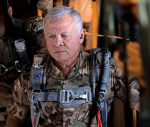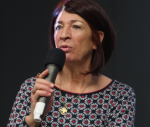You are here
The new Cold War
Aug 11,2016 - Last updated at Aug 11,2016
Nearly everyone I talk politics to says the world is in a mess. But I live in a student town and most of them have nothing to measure their opinions against.
They do not know much about the Cold War, the Cuban missile crisis, Watergate or the great famines in Africa and India.
In many ways, most of us live in the best of times, on better incomes than our parents, with longevity increasing all over the world, not least in the poorer countries, and helped by inventions that our parents never dreamt were possible.
As for war, as each year goes by, less people are killed, UN peacekeeping is more advanced and sophisticated than before, Russia and the West, although at loggerheads over Ukraine, worked together to get Iran to give up its nuclear plans and are talking now about how to cooperate against Daesh.
However, it is true that overall things do not look good in Syria, Ukraine, Egypt, Afghanistan, Saudi Arabia, Iraq, Turkey and Southern Sudan, but the rest of the world looks reasonably peaceful.
Russia and the US are overloaded with nuclear weapons and appear to have put future agreements on big reductions on the shelf.
Nevertheless, they have already reduced the total number of nuclear-tipped missiles from 70,000 to 16,300, and placed limits on large standing armies in Europe.
Arguably, the biggest problem in the world today is that the political elite and much of the media in both Russia and the US (less so in Europe) are gearing up for a new Cold War.
A dispassionate conversation between the two sides becomes ever more difficult.
President Vladimir Putin has certainly made his mistakes. Ukraine is one. Propping up President Bashar Assad in Syria is another.
President Barack Obama with his former secretary of state, Hillary Clinton, made his. He made Russia very angry by taking another step forward in the expansion of NATO, right up to parts of the Russian border.
President Bill Clinton had started this ball rolling by breaking the American promise to president Mikhail Gorbachev of the Soviet Union not to expand NATO up to the borders of the former members of the Warsaw Pact. In return, Russia agreed to allow German reunification.
In Ukraine, the US and the EU walked away from the peace arrangement the French, German and Polish foreign ministers had laboriously hammered out with the government of president Viktor Yanukovich.
In the face of more unrest, led by fascist-inspired demonstrators, they caved in to the rebels’ wishes and walked away from their deal. Yanukovich fled, thus making new fair elections impossible.
So what can be done now to get the protagonists off the hook?
In his new book “Cold War”, Robert Legvold argues that there is “no path forward unless the two countries travel it together”.
Given the US’ and Europe’s overwhelming economic, military and strategic advantage, the US can well afford to take the lead in exploring possibilities.
The Russian side needs to entertain the possibility that the US is not bent on undermining Russia’s national security.
The US needs to consider the possibility that what it sees as implacable in Russia’s behaviour is not and what it fears in Russia’s aims may be misplaced.
If both sides are to test each other’s intentions, forging a joint campaign against Daesh is one possibility. The two sides are discussing it right now.
Then they should go on to the Syrian civil war itself, but not linking the two.
The US should probably agree to forsake the Assad regime before the country is completely destroyed.
The rebels cannot possibly win and if they do, they would be the last kind of people for the West to like.
The other — complementary — way forward is strategic talks. But this is a non-starter as long as US policy is to isolate Russia.
When US Secretary of State John Kerry, after his meeting with Putin, said in May 2015 that “it is necessary to keep the lines of communication open and there was no substitute for direct talks”, people in Washington walked his comments back.
Yet a similar strategic dialogue went well in the spring of 2003 after the US had gone to war with president Saddam Hussein.
The bureaucracy was avoided and only those close to Putin and president George W. Bush participated. They met once a month and it profoundly changed the atmospherics.
What is needed, argues Legvold, is “reversing the usual policy planning, not starting with the challenges of the moment. Russian and US policymakers would do better by starting at the other end, developing a realistic strategic vision and working back”.
I say we cannot avoid the immediate need for cooperation over Daesh and Syria. But a strategic dialogue is also badly needed at the same time if we are to return to the good times at the end of the Cold War.













